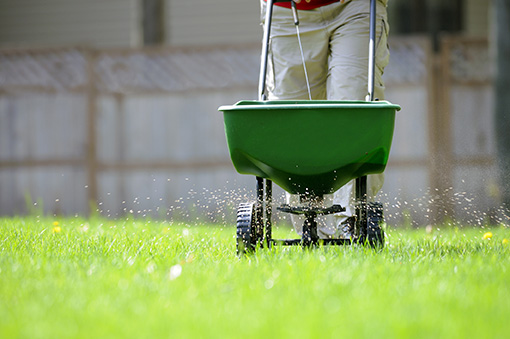
Broadcast Spreader Calibration
Effective lawn care requires accurate granular product application. Broadcast spreader calibration is necessary for an effective application. The following procedures are one example of effective spreader calibration:

Effective lawn care requires accurate granular product application. Broadcast spreader calibration is necessary for an effective application. The following procedures are one example of effective spreader calibration:

Lawn insects come in many shapes and sizes but basically, they either feed on the grass stems or the roots. Knowing who you are dealing with is critical in effective insect control. There are different products and different timings recommended for different insects. There are both preventative and curative products currently available.

Soil testing is the first step in determining nutrient availability. A soil analysis provides the levels of all the major (macro) nutrients necessary for turf establishment and development.

Soil compaction affects every aspect of turf quality. Addressing compaction is an important part of effective lawn management. It should be understood that there is no one product or procedure that can transform a poor quality lawn. It is rather the cumulative total of doing more right than wrong. Compaction relief is one step on the road to a healthy lawn.

In the fall, more than any other time of year, your lawn manufactures carbohydrates. It manufactures these carbohydrates in the green leaves. It uses these carbohydrates for energy to recover from summer stress and develop through the fall. So, how can you prepare or fertilize your lawn properly? We’ll tell you in this article!

Someone once said “you can grow grass on a rock, just give it what it needs,” but the quality of your lawn starts with the soil. Turf is sustained by the water and nutrients it pulls from the soil. The qualities of the soil, both physical and chemical, contribute to moisture and nutrient availability.

When you look out at your lawn, what do you see?Is it a green expanse, filled with lush, thick grass and free of weeds? If so, you can probably stop reading. If not, we’d like to help sort through the seemingly endless barrage of products, procedures, and practices that are supposed to give you the lawn you want. So let’s look out at your lawn again. What do you see? What’s the most obvious problem? Crabgrass? Weeds? Bare spots? Or is your grass just thin, lacking the rich emerald color we’ve all come to expect from a vibrant lawn?